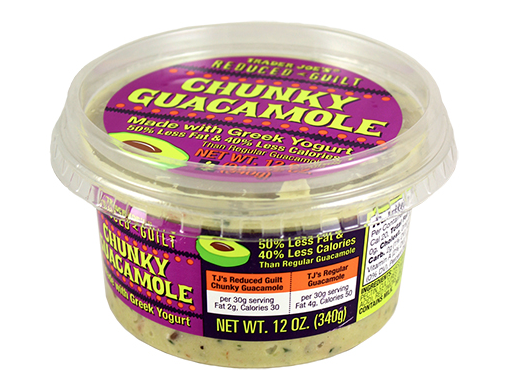
by AmyPlano | Jul 23, 2019 | PCOS and carbohydrates, PCOS and Fats, Uncategorized, Weight Loss
How to Count your Macros when you have PCOS
Learning how to count your macros when you have PCOS is a hot topic! But, before I walk you through how to do this – I need to explain what the heck macros are in the first place. Macros or more properly known as macronutrients represent the amount of the three nutrients: carbohydrates, protein and fat you need to consume to reach to achieve your dietary goals. These values are expressed in grams and are all based on the amount of calories you consume daily.

In order to determine our macros when you have PCOS, you need to know how many calories you should be consuming. In addition, you need to know the percentage of each macronutrient you should be consuming daily. The PCOS Dietitian suggests the following breakdown:

So, basically when someone tells you they are, “Counting their macros,” this simply means they are counting and tracking the amount of carbohydrates, protein and fat they take in each day.
Calories
Before we determine how to count your macros when you have PCOS we need to talk a bit about calories. While everyone with PCOS has different dietary goals, most women are seeking weight loss. Therefore, for the premise of this blog, we are going to base the calories and macros on the short-term goal of weight loss.
However, as you can imagine determining your calories for weight loss when you have PCOS is not a simple process. Your calorie needs are just as unique as you are! Your calories for weight loss depend on many variables including your: age, gender, height, weight, body fat, physical activity level, type of job and even your sleep patterns. Therefore, I would highly recommend meeting with a Registered Dietitian who specializes in PCOS to either have your metabolism tested or just to obtain some guidance on how to determine your personalized calorie needs.
In order to illustrate how to count your macros when you have PCOS, we are going to use a calorie amount of 1,400 calories per day. This would likely be a good starting point for a 25 year old female who is 5 feet 4 inches, weighs 180 pounds, is around 30 percent body fat, works out 3 times per week doing cardio 30 minutes per session, has a sedentary desk job and gets around 5 to 6 hours per night of uninterrupted sleep. Once again, your needs will likely be different, but I am using 1400 calories to provide a concrete example of how to determine your macros.
Carbohydrates and PCOS
Not surprisingly, the majority of food we eat is typically made up of carbohydrates? Carbohydrates provide energy for the body. The two main types of carbohydrates – are simple carbs (SC) and complex carbs (CC). SC occur naturally in the foods we eat. They are foods like yogurt and milk products, fruit and honey. SC are also added to food when it is processed. Examples of foods with added SC include soft drinks, cookies, ice cream, most granola bars and candy. Conversely, CC are considered more nutrient dense as they contain more fiber, vitamins and mineral than SC. Complex carbohydrates include foods made from whole grains like rice and pasta as well as legumes (beans, lentils and peas) and starchy vegetables like corn and winter squash.
In our bodies SC break down very quickly. They enter the bloodstream almost immediately causing a spike in blood sugar. This in turn prompts a rapid increase in insulin. Consequently, eating too many SC can exacerbate the symptoms of PCOS by worsening IR and facilitating weight gain.
Conversely, complex carbohydrates can improve insulin resistance as they slowly release glucose allowing for optimal insulin regulation. Due to their slow absorption rate, CC promotes an increased sense of fullness and satiety. That is why I encourage the majority of your be complex carbohydrates.
How to Determine your Carbohydrates Macros when you have PCOS
When you have PCOS, I generally recommend keeping carbohydrates under 40 percent of your total calories. This would mean if you were following a 1,400 calorie diet, you would should be consuming 140 grams of carbohydrates or less per day.
How did I get to that number? Let’s take a look at my math.

Protein and PCOS
Protein is essential. It is pretty much required for every single structure and action in the body. Everything from your hair, nails, skins and bones to your ligaments, hormones and enzymes are composed of protein.
Protein is derived from animal foods like meat, poultry, pork, fish, seafood, eggs and dairy. Plant based proteins include legumes, nuts and soy.
Protein takes longer than carbohydrates to digest and confers a sense of satiety. Also, generally protein by itself doesn’t require much insulin to be processed. This is because protein is not converted to glucose. Hence, protein does not raise insulin like carbohydrates. That is why I often recommend including a small amount of protein with your meals and snacks. This helps stabilize blood sugar and improves your overall insulin response.
How to Determine your Protein Macros when you have PCOS
When you have PCOS, I generally recommend keeping carbohydrates at around 30 percent of your total calories. This would mean if you were following a 1,400 calorie diet, you would should be consuming around 105 grams of protein per day.
How did I get to that number? Let’s take a look at my math.
 Fat and PCOS
Fat and PCOS
You might be wondering exactly where fat fits into a healthy lifestyle for PCOS. Despite its demonization, fat is an important part of our diet. Fat supports and cushions our internal organs, helps to regulate body temperature, and allows for proper absorption of several vitamins. Fat also provides the building blocks for many of our sex hormones. Fats are found in a variety of food from butter and oils to dairy products, meats and processed foods.
The right types of fats when carefully consumed can help improve insulin levels. Like protein, dietary fat alone doesn’t require insulin because it doesn’t breakdown into glucose. It also helps keep us satisfied longer thereby reducing overeating. Fat also has the unique ability to provide an increased palatability and mouth feel carbohydrates and fat don’t.
However, in spite of its many awesome insulin-lowering qualities you can’t eat as much fat as want. In fact, diets high in certain types of fats can actually contribute to IR, heart disease, hypertension and certain types of cancers.
How to Determine your Fat Macros when you have PCOS
When you have PCOS, I generally recommend keeping fat at around 30 percent of your total calories. This would mean if you were following a 1,400 calorie diet, you would should be consuming 47 grams of fat per day.
How did I get to that number? Let’s take a look at my math.
 Conclusion
Conclusion
Everybody and their mother is counting macros these days and you can too! All you need to know is how many calories per day you need to consume to meet your dietary goals. Then you simply apply the percentages 40, 30 and 30 respectively for carbohydrates, protein and fat. Lastly, you divide these values by each nutrient’s calorie value to arrive at your macronutrient amount in grams. Therefore, using the example noted above for someone following a 1,400 calorie diet their macros would be as follows:

Diet is critical in effectively managing PCOS. The foods we consume have a significant impact on our hormones. Balancing your hormones is critical to having an optimal metabolism. Since it is obvious that the underlying cause of PCOS is hormonal imbalance, it is not surprising that diet can impact the symptoms and metabolic consequences of PCOS. Determining your macros when you have PCOS isn’t difficult it just takes a little math! Macro patterns like the ones discussed in this article that support lower insulin levels should be an integral part of healthy diet for PCOS.

by AmyPlano | Jul 9, 2019 | PCOS and carbohydrates, Uncategorized
J.E.R.F.
Today’s nutrition tip is brought to you by the acronym J.E.R.F. – Just Eat Real Food. There are a million ways to spin off of this word (and the relative term real) but the direction I am going to is with ‘pseudo’ foods. Bare with me … I promise you don’t need to eat cauliflower to feel the love.
Last week I posted this silly quote on social media:

And while it definitely made my chuckle – it also made me realize just how many foods we come across on a day-day basis are foods that have turned into things they really are not:
-
- Cauliflower pizza
- Cauliflower tots
- Cauliflower rice
- Mashed cauliflower
- Noodles made from zucchini, carrots, butternut squash
- Coconut ice cream
- Riced broccoli
- Impossible burgers– non-meat burgers that ‘bleed’ beet juice
- You get my point here 🙂
Cauliflower pizza IS NOT pizza.
And truth be told most versions don’t even remotely come close to the real deal pizza. In all honesty, most cauliflower pizza is not EVEN that much healthier. The crust is generally made with cheese, eggs and more cheese. I have nothing against cheese or eggs– but when you spec it out most can clock in just as high in calories as regular pizza depending on the toppings.
I love zoodles every. once. in and a while.
Of course they are a vegetable high in fiber, nutrients and vitamins and minerals. But what is wrong with having real pasta every once and a while? Yes – I know the carbs. But say you really love pasta why not just have the real deal occasionally in small amounts?
Riced broccoli — first of all have you tried it? It tastes just like broccoli! But are you surprised. Likely not because it IS broccoli.
Anything vegan trying to resemble meat – my only question is a big fat WHY?
Why not just eat real meat if that is the flavor, texture profile you are going for. I can only get away with saying that because I was a vegetarian for 10 years, a vegan for 2 years and a raw vegan for 1 year. I also used to have long dread locks and lived in Costa Rica – so go figure! Now I eat meat – love it – and often I am embarrassed to tell you that I used to eat something called “tuno.” No that is not an expensive Italian tuna in a high grade olive oil. Tuno was a ‘fake’ vegetarian based “tuna” that came in a can and smelled like tuna. Wicked gross.
Bottom Line
My point here is don’t eat foods because you feel like you have to. If you love riced broccoli then … rock on with your bad self! But don’t feel like you have to love it and convince yourself it tastes like rice. Because it certainly doesn’t! Also remember – you don’t have to be anyone or anything you don’t want to be. So why should your food be any different?
You don’t have to eat cauliflower pizza and ‘pretend’ it is delicious. Why not just head down to Modern Pizza once a month and tear it up? (When you do might I suggest the Veggie Bomb with hot cherry peppers!)
Furthermore, you don’t have to kill yourself and do a Whole-30 and deprive yourself of dairy when you love cheese. What are you going to do after you the 30 days? Will you never. ever. ever. return to eating your favorite food group? Survey says – I think not my friend! So why torture yourself and take something out of your diet you love. We have to be realistic with our food choices. If not then behavior change becomes unsustainable and we crash and burn every single time.
You see pizza, tater tots, rice and pasta are NOT the enemy. It is the way we abuse these foods and our relationship with them that makes them unhealthy.
Love yourself enough to eat the real deal
Do you think eating pizza or cheese for that matter will completely derail all your hard work? Hardly. Eating them every day – highly likely! But occasionally eating the foods you love — you know the ones that puts a smile on your face — should be part of your lifestyle These foods are not something you should try to replace. Because you and I both know there is absolutely no replacement for great REAL high quality food.
See part of the cool thing about the food we put into our bodies is that for many of us it is one the few things in life we can control. So why not make a pack to yourself that you are no longer going to eat something just because you feel like you should. You are no longer going to feel bad because you just don’t love spaghetti squash. Instead you are going to have a small serving of the real deal with some awesome sauce and homemade meatballs and call a night. You are not going to feel bad. You are not going to feel like you failed. Instead, you are going to be proud that you made a conscious decision to eat real food that made your little heart sing.
I wanted to leave you with some parting words ♥


by AmyPlano | Jun 19, 2019 | PCOS snacks, Uncategorized
PCOS-friendly snacks
I confess. I am a snacker at ♥. I know some people just don’t snack. They eat their 2-3 main meals per day and nothing in between. I my friends am NOT that girl. However, throw PCOS into the mix and snacking can become somewhat daunting! However, I have got you covered today with some easy-peasy PCOS-friendly snacks.
Often I prefer to have snacks rather than meals. But not just one or two snacks. More like a personal ‘buffet’ of all things snacky. You see, my husband is not a snacker. Because well, tough guys don’t snack. Hee Hee! SO any and all snacks in the house are for me, myself and I.
A little guac, some hummus, a couple bites of scrumptious cheese, some raw veggies and maybe even a couple spoonfuls of full-fat Greek yogurt. That sort of stuff just makes my heart smile. It is like a party – but I am the only one there. After all, snacks are delicious. Right? I am just sayin’.

Trader Joe’s Guiltless Guacamole – one of my all time favorite PCOS-friendly snacks
Therefore, as a Registered Dietitian you probably don’t find it odd that I get tons of questions about snacks. I was trying to think if I could come up with a universal guideline when it comes to snacks. Then it hit me – mid ‘buffet’ line at my very own house: snack from the fridge NOT your cabinets.
Get Your PCOS Snack On
Fruit, veggies, yogurt, single-serving hummus & guacamole, cheese, and even leftovers are all super-duper healthy snack-a-roonies that all live in your refrigerator. Compare them with the snacks like chips, crackers, sweets and treats that typically reside in your kitchen cupboards. Therefore, looking to your your fridge when you get the munchies should be a no-brainer!
Set yourself up to succeed with healthy snacking by being proactive. Stock your refrigerator with healthy (and delicious!) options and make a solid effort to prep them ahead.
Wash and slice fruits and veggies BEFORE you even put them away when you return from the supermarket. Rock your Instapot to hard boil a half a dozen eggs. Can I say game changer! Or if you are super lazy grab some precooked hard boiled eggs from Traders. And no – they are not as sketchy as you might think. Stash leftovers in single-serving clear containers (so there is no guessing what is in them!). No leftovers? Pick up a ¼ pound of chicken or tuna salad from the deli. Both make for delicious snacks. Buy single servings of cheese like Baby Bels, mozzarella sticks and Laughing Cow. Then arrange your refrigerator so the healthier foods are front and center, making it more likely that they’ll be the first thing you reach for when you’re hungry.
Easy peasy! Now sit down and high five yourself. You worked hard. No get yo’self a snack.
Hugs & High Fives,

P.S. Never. Ever. Ever. Grocery shop when you are hungry! Here is actual footage of my cart at Trader Joe’s last week.

Dietitian Disaster!
I kid you not! There is pretty much about $150 worth of snacks in that cart ♥ At least I bought bananas, right? Even dietitians have less than stellar days!

by AmyPlano | Jul 9, 2018 | PCOS and metabolism, Uncategorized
What is metabolic testing ?
The million dollar question on everyone’s mind, “what is metabolic testing ?” Many people have heard the term but have no clue what to expect when they come in to have their metabolism tested. The goal of this blog is to clarify this information and tell you exactly how to prepare for the testing to ensure the best results.
Trust me – there is absolutely nothing remotely scary about having your metabolism tested. Think about it like a walk in the park compared to things like a oral glucose challenge or the fun 18 viles of blood you had pulled for your PCOS panel. In fact – I can almost guarantee you will be skipping out of my office with the new information in hand like a kid on Christmas day.
First things first, metabolism testing does not hurt. I promise! We don’t draw blood. Also there is NO physical exertion involved. In the past, I have had patients show up in their workout gear thinking they were going to participate in something that might resemble a stress test. This is certainly not the case. So no worries you can leave your running shoes at home!
The device we use to measure your metabolism is called the Bodygem. This device measures your metabolism by capturing the air you breath.
Sounds pretty easy? Well it is.

Three things to do to prepare for the metabolism test:
Come fasted with no caffeine in your system for 4 hours prior to your test. You can drink plenty of water though!
Please don’t exercise within 4 hours of the test.
Arrive not having smoked a cigarette within 4 hours of the test.
Caffeine, exercise, and nicotine all can slightly increase your metabolic rate. Therefore, we do our best to minimize these variables so we can deliver you the most accurate results.
Curious about what other factors might influence your metabolism? Check out last week’s informative blog “RMR Testing 101” on this exact topic.
The actual test
Once you arrive we will get you all set up! You will sit peacefully in a chair with a small mouth tube in your mouth and a cute little nose clip on. The goal of the nose clip is to create a vacuum seal so no air escapes.
I promise, I will not post any Facebook pictures with your sexy nose clip on:)
By measuring both the amount of oxygen you exhale and the amount of carbon dioxide you expire we are able to calculate your metabolism. It’s that simple. This method is called indirect calorimetry and is one of the most accurate ways to measure metabolism. The test itself takes about 10 minutes.
Like I mentioned, the test does not hurt. However, some people find it uncomfortable as you need to breathe through your mouth for the duration of the test. However, I am pretty sure you have been through worse.

Once the test is complete we need to talk goals. Generally speaking most patients with PCOS only have one goal – to lose weight. Therefore, the next step will be to weigh you and test your body fat. That way we have a starting point for you to gauge your progress.
Next, we will gather your demographics. Factors such as your age, sex, occupation, type and frequency of exercise, and even your sleep patterns are all important variables in determining an appropriate calorie level for your goals. All this information is then entered into a software program which then generates several important numbers.

The Bodygem tells us the following:
Exactly how many calories you need to take in on the days you workout
Exactly how many calories you need to take in on your non-training (rest) days.
How you compare to other individuals with the same demographics
Your BMI
Once we have this important information I can then specifically tell you where your calories need to be to accomplish your weight loss goals. I can also make suggestions on your macros if that is something you are interested in. If you need help setting up these numbers in a tracking program like MyfitnessPal I am happy to help guide you as well.
If you need additional services like a customized meal planner with specific meal suggestions or guidance on how to incorporate carbohydrate cycling or intermittent fasting these can all be provided at an additional fee.
The entire metabolic test plus the consult should take no longer than 45 minutes. You will leave with a personalized print out with your results and a solid knowledge of what is metabolic testing really entails. No guesswork involved!

On next week’s blog we will dive deeper into the results. We will interpret the results of three actual Bodygem results and discuss how to apply the information. So now when someone asks you the question, ” what is metabolic testing ” you will be able to give them a A+ answer 🙂
P.S. The icing on the cake is if you purchase the metabolism test during the month of July you will be entitled to a 40 % discount for my birthday. Just use coupon code thisis40 when you schedule your metabolism test on www.amyplano.com to receive the discount. However, act fast as this discount will only be around until July 31, 2018.
Have questions on metabolic testing? Please don’t be shy! Ask in the comments section below.

by AmyPlano | Jul 2, 2018 | General information about PCOS, PCOS and metabolism, Uncategorized, Weight Loss
So it is true … this girl right here turns 40 years old on Friday, June 29th. And what better way to celebrate my 40th then with YOU my loyal readers. So how would you like to receive a present from me? How does a 40 % discount on a metabolism test to celebrate this fabulous occasion sound? I don’t know about you but it sounds pretty dang awesome to me.

Heading into the next decade can be a drag. So rather than have a pity party for myself I decided to give you a pretty sweet present to mark this milestone birthday – 40 % off metabolism testing for the whole month of July. Whoot! Whoot!

For the whole month of July redeem coupon code thisis40 when scheduling your metabolism test to receive 40 % off each individual test. The normal rate for a metabolism test is $150.00. Therefore, by redeeming the code thisis40 you save yourself 60 bucks! If that is not pretty sweet – then I don’t know what is.
Important note: In order to receive the most accurate reading on the metabolic test you should be fasted (no food), with no exercise or caffeine within 4 hours of your test time. You can drink plenty of water – just nothing with caffeine or calories.
Below are the steps to redeem your discounted metabolism test:
- Click HERE and you will be re-directed to the scheduling section of this website.
- Click the link for “Metabolism Testing” under appointments.
- When the prompts ask you “with” who you would like to schedule you can choose either myself or my fabulous RD Audrey. The discount applies to us BOTH.
- Select the time slot you would like to come in for your metabolism test.
- Next put in your name, phone number and email address.
- Within the information section where it says “Redeem Coupon” put in the discount code thisis40
- Follow the prompts for payment
- Once you have provided payment you will receive an email confirmation with the date and time of your visit.
- Arrive fasted, with no caffeine or exercise within 4 hours of your test.
Our office is located at 500 Boston Post Road, Orange, CT 06477. We are in the same plaza as Hawley Lane Shoes. When you pull into the plaza look for signs for The Plano Program.
Over the next month I will be releasing more information about why having your metabolism tested is SO friggin’ important – so stay tuned for blog updates.
Please fee free to share this birthday gift with anyone who you think might benefit – which I think is pretty much anyone with nutrition related goals. After all who does not want to know their metabolism? Said no one ever ?
Have you ever had your metabolism tested? Did you find it helpful in reaching your nutrition related goals. Please tell us your experience in the comments below.



by AmyPlano | Jul 14, 2016 | Uncategorized





 Fat and PCOS
Fat and PCOS Conclusion
Conclusion


















